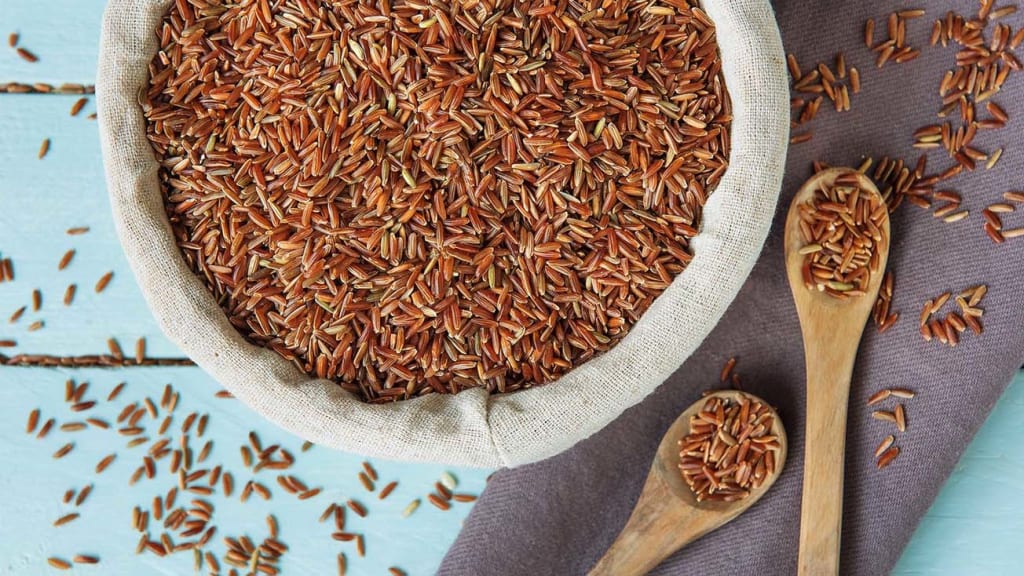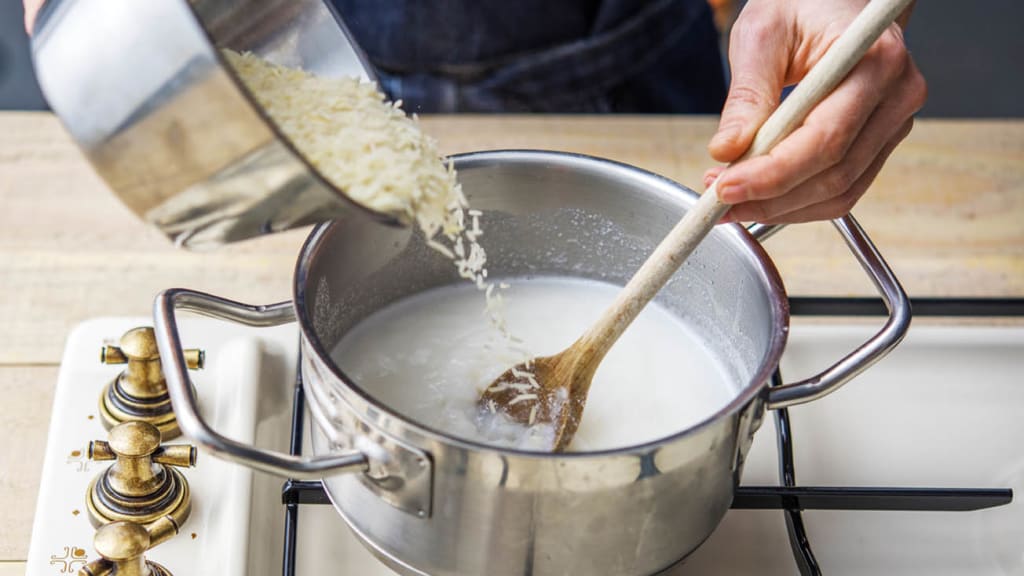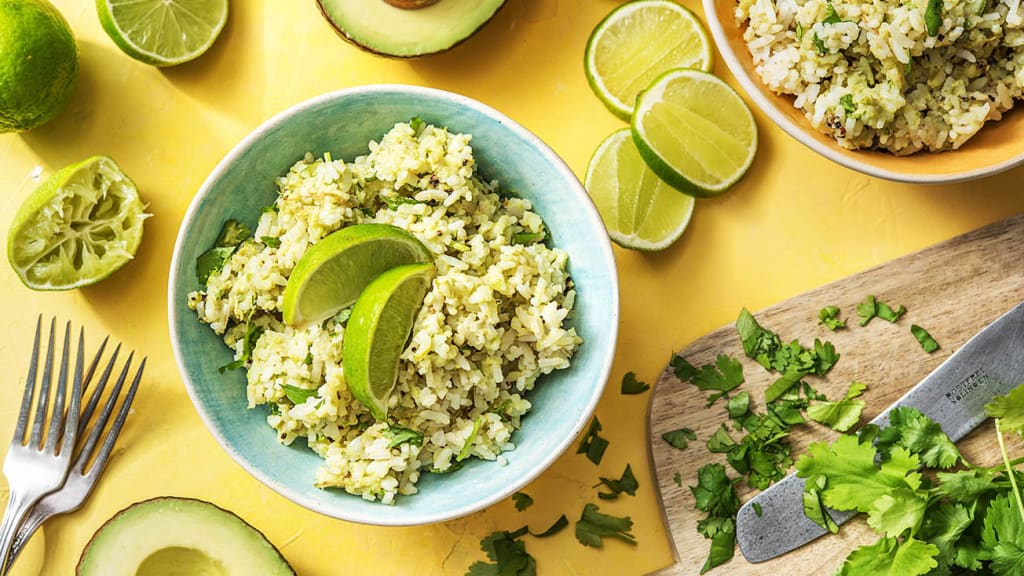Rice
Rice
This nutritious staple is one of the most widely cultivated foods on the planet. An amazing repertoire of rice recipes will take you through a range of flavours and textures.
RICE NUTRITIONAL INFORMATION & HEALTH BENEFITS
Rice is popular as a filling element in many meals and a great source of energy. With virtually no saturated fat or cholesterol, it is an effective base for a controlled diet. White varieties such as the famous basmati from India are milled and the husk is removed to leave a fine, ivory grain, in a process that slightly reduces its calorie count and its fibre content. In contrast, unhulled red rice, such as the Camargue variety, contains over twice the calories, but also more nutrients, including potassium, sodium and useful dietary fibre.
When boiled or steamed, it can be a deliciously simple, low-fat side dish to complement heartier or more fiery flavours. It’s worth noting that frying or serving it in a traditional mixed dish – for example, as a biryani, nasi goreng or a paella – will increase its calorific value, while also bringing in a range of different vitamins and proteins.

HOW TO STORE RICE
Most rice is sold as a dried grain, from the brown variety to the more processed and milled white variety. It has an excellent shelf life – typically 12 months or more – and is best stored in a clear, airtight jar where it can be kept dry. In these conditions it does not deteriorate due to light or heat. A traditional chef’s trick is to season this essential ingredient before it’s cooked by adding fresh herbs such as sage or marjoram to the jar, or even the wrapping or shavings of a white or black truffle, which infuse it with a rich flavour.
Some varieties are often sold boxed and in a vacuum-packed block, which is the best way to preserve their freshness until ready for use.
Instant rice, whether made in the microwave or boiled in a disposable pouch, is a quick alternative. It is typically processed and part-cooked to make it stable enough for a considerable shelf life. These packets can also be stored at ambient room temperature or in the fridge. Check the label for the recommended storage location to ensure cooked rice stays safe and delicious for as long as possible.

Rice can contain spores - or dormant microorganisms - of a bacteria called Bacillus cereus. These spores remain dormant in dry, ambient temperatures but once introduced to a wet environment, they can survive even high temperatures and go from dormant spores to active bacteria that may release a toxin that can induce food poisoning symptoms.
Some food safety tips for handling, storing and cooking rice to avoid food poisoning and illness:
- Serve rice as soon as it has been cooked
- If serving cold, cool the rice as quickly as possible after cooking and store chilled (below 8°C) until ready to eat
- Do not store cooked rice for more than one day
- If you reheat rice, make sure it is cooked sufficiently through and piping hot
- Do not reheat rice more than once
RICE TIPS, TRICKS & HACKS
When steaming or boiling rice, start by washing the grains – a process which removes some of their starch and improves the texture of the finished dish. Simply pour into a fine sieve and rinse under running water. Another option is to soak it for a few minutes, which also has the effect of reducing its cooking time. Be sure to cook the rice straight away after washing or soaking, though. Do not store wet raw or uncooked rice as it can breed dangerous bacteria.
For most common long-grain varieties, a simple rule is to boil a serving in twice as much water. It may not look enough, but the rice will naturally swell while cooking. Its finished texture may be anything from fluffy and light to pleasantly al dente, such as in the case of the distinctively nutty red variety.

In some recipes, the grains are first quickly fried, such as in the dish pilaf. They may also be briefly coated in the pan’s hot oil along with aromatic seasonings, onion and garlic, for example if you are making a gently cooked stovetop risotto. For the latter, a mix of white wine and stock is often used to add depth of flavour to arborio or the firmer and starchier carnaroli varieties.
And don’t forget rice as a dessert: a huge variety of family-favourite recipes from Asia, Latin America and Europe either bake or simmer short-grain varieties with a combination of:
- dried fruits
- cardamom
- cinnamon
- sugar
- milk
RICE FACTS
Often enjoyed in a mix with white varieties, the distinctive black grain of 'wild rice' isn't strictly a normal rice at all. Also called zizania or manoomin, it is a tall grass that grows in slow-moving fresh water, on river banks and lake shores. It was gathered by many First Nation peoples of North America, who would harvest and thresh it in their canoes.
https://www.bbc.co.uk/food/wild_rice
https://ndb.nal.usda.gov/ndb/search/list
https://www.greatbritishchefs.com/recipes/camargue-black-rice-recipe
https://www.nhs.uk/common-health-questions/food-and-diet/can-reheating-rice-cause-food-poisoning/
https://www.nhs.uk/common-health-questions/food-and-diet/can-reheating-rice-cause-food-poisoning/
Delicious recipes for you to choose next week
Like what you see? Check out all of our upcoming recipes
VIEW OUR MENU